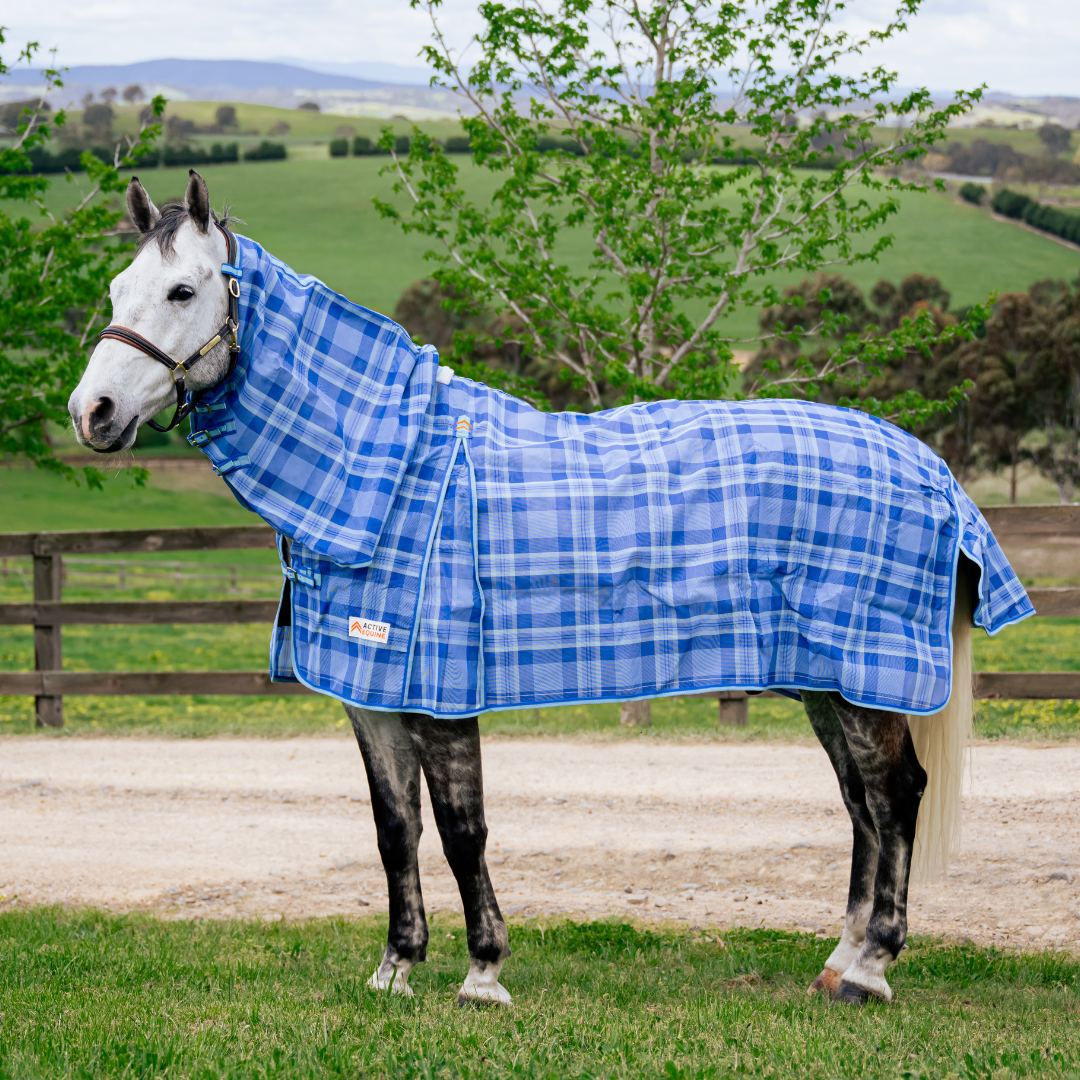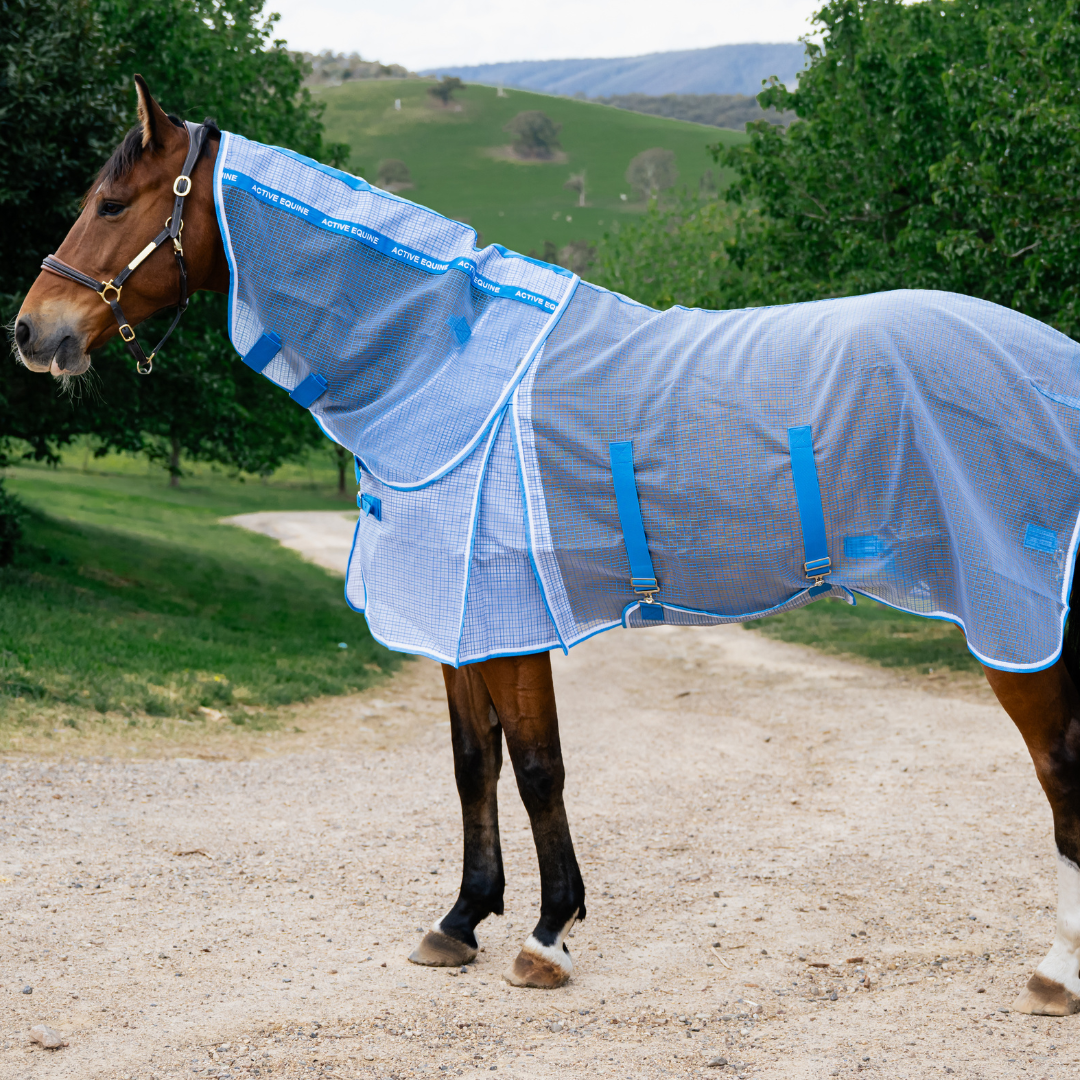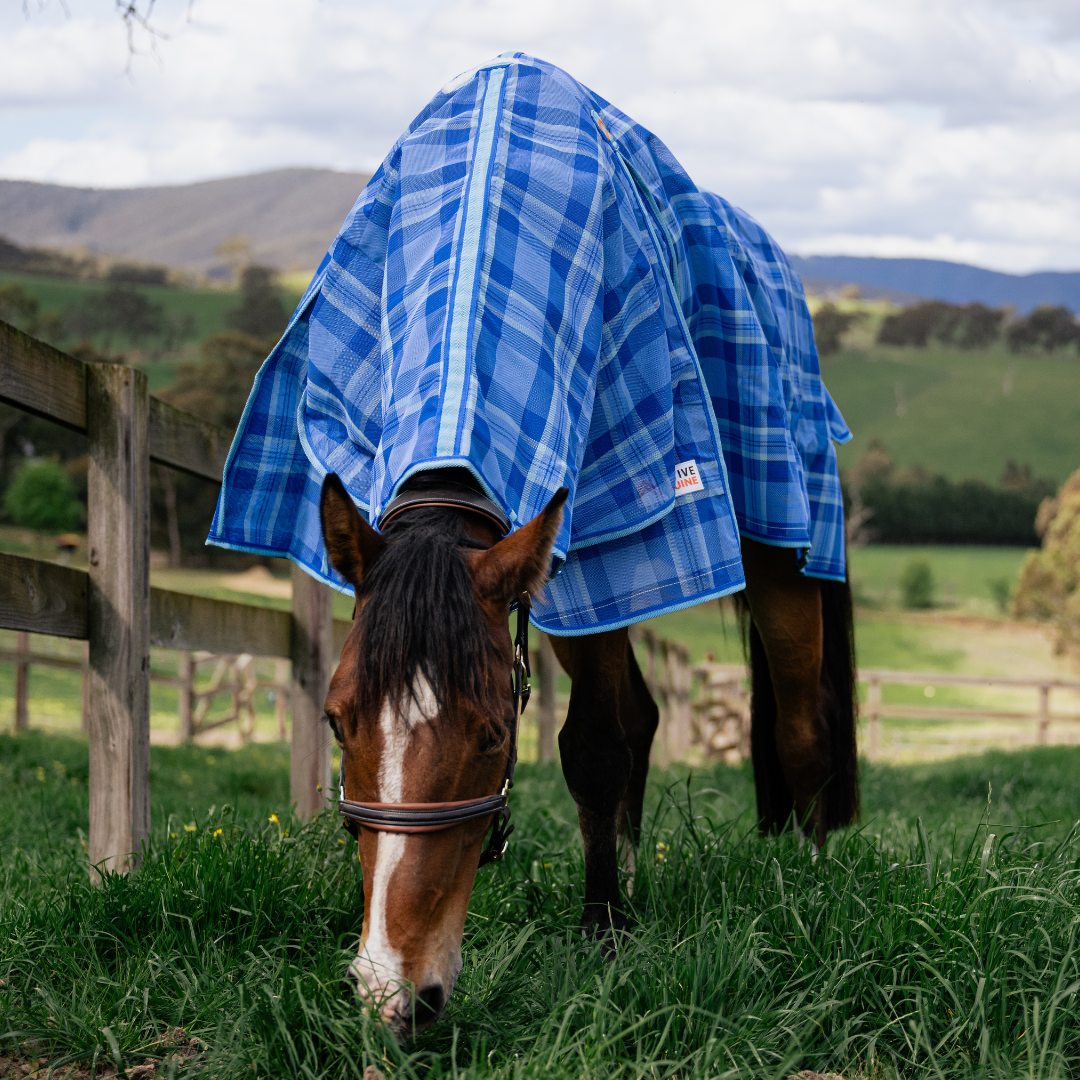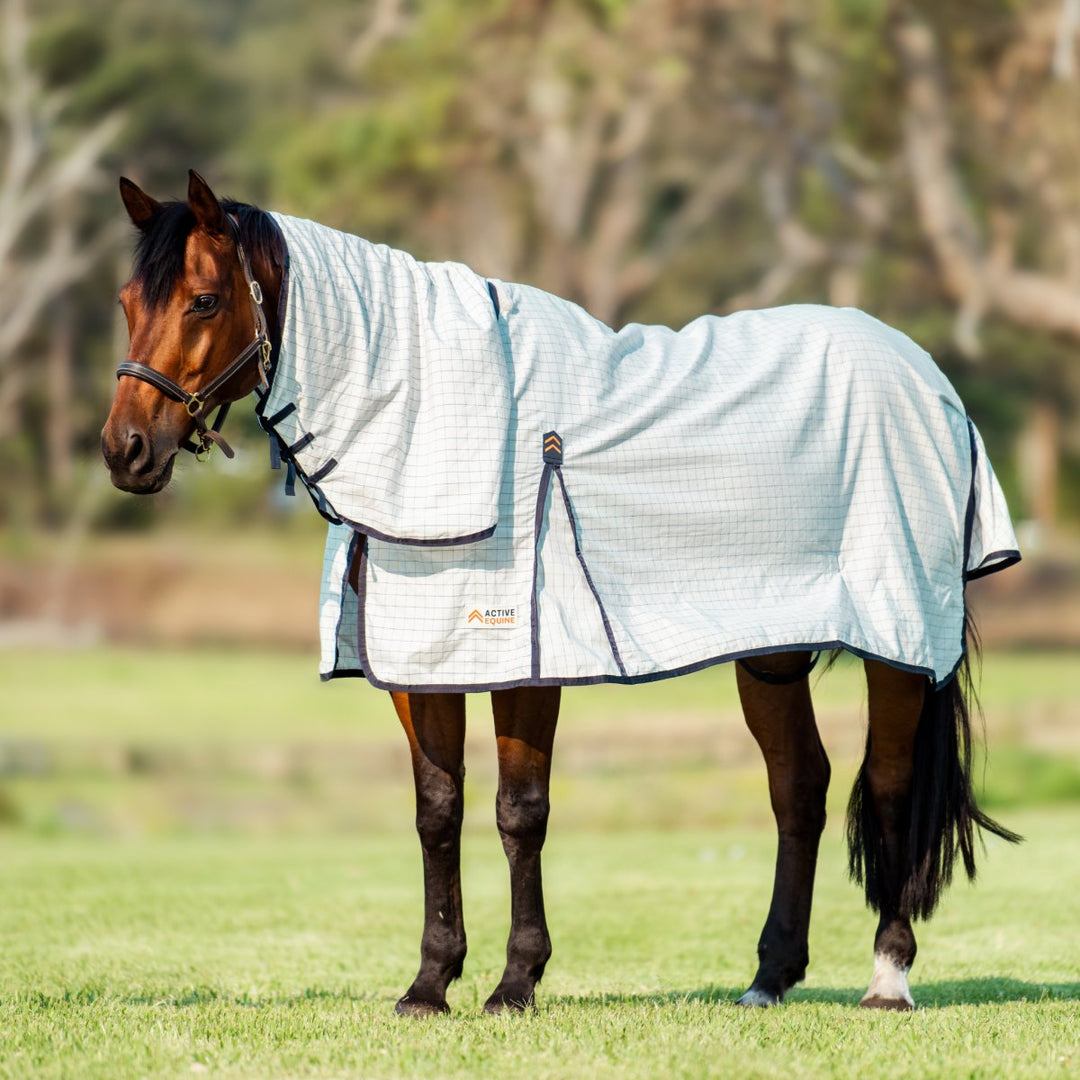Fly masks for horses…making the right choice.
It only takes a quick internet search to realise that the market for fly masks for horses is huge. The variation in style, colour, detachable features and UV protection means there is a mask out there to suit every horse; the question remains however, which one is the best for your horse?
Without the right knowledge in their saddlebag, a rider is likely to make their decision based on the bottom line - price. Yes, there are plenty of cheap fly masks available, but in preferencing price over quality, many horse owners end up with a product that is less effective, compromising fit, level of protection and durability.
So rather than needlessly repeat this costly mistake, follow these simple tips below to ensure your first fly mask choice is the best choice for your horse.
The quality of a fly mask, is job number one
One of the most sensitive areas on the body of any animal is the face and head. All five senses (sight, sound, smell, taste and touch) are captured there so it’s essential that the fly mask you choose provides for a soft and comfortable fit, doesn’t hinder your horse’s vision or hearing and has no sharp irritating edges.
Recommendation
- Look at the types of materials used to make the mask. Softer materials like small pile fleece lining or foam will provide for greater comfort as well as offer an element of sweat absorption which will be essential in the hotter months.
Fit for size and purpose
For a fly mask to be effective, it needs to fit the horse correctly in all areas – the back of the ears, the jowls, the cheeks, eyes and nose. A mask that is too tight will at best be uncomfortable for your horse and at worst could cause eye and skin irritation.
Recommendations
- As a general rule, the mask should provide a comfortable fit around the horse’s face. If you can get more than two fingers between the noseband and your horse it is likely too big, making the mask easier to shift around and potentially come off.
- Allow for plenty of room around the eyes by choosing a fly mask that is structured around the eye area. The stronger and roomier this is, the less likely it will collapse down while being worn or catch your horse’s eyelashes against the mesh.
- To maximise fit, look for fly masks with stretch seams or hook and loop options that allow for plenty of adjustability.
- Whilst fly masks can be worn at any time of year, they are usually worn during the hotter months meaning you want to make sure it is designed to maximise good airflow.
Categories and Features
Fly masks come in a few key categories with some nifty features to suit a horse’s specific need and preference:
- Full Face Mask - great all over protection against flies, midges and the sun.
- Fly Mask with Ears - for horses who are prone to suffering midge bites.
- Fly Masks without Ears - for horses that cannot tolerate anything touching their ears.
- Muzzle Fringe Fly Masks - for horses that don’t like nose covering, or need protection from the flies and midges with added UV protection.
- Detachable Nose - perfect for horses who are very sensitive to flies or midges around their muzzle who are sensitive to the sun and need added UV protection.
Recommendation
- Take a few minutes to write down the specific needs of your horse and the area you are in. How much shade is there in your horse’s paddock? Does your horse easily get sunburnt around the nose and face? What parts of your horse’s face are particularly sensitive?
UV Protection
Much like humans, horses with little or no skin pigmentation will feel the effects of prolonged sun exposure quicker than darker horses. Squinting, watery eyes, sunburn and photosensitisation in the short-term can lead to more dramatic long term health issues like cataracts or cancer. Fly masks with UV protection is a feature few horse owners and riders should skimp on as its short and long-term health benefits can not be understated.
Recommendation
- Select a mask with a minimum UV protection rating of 70%.
Maintenance
Like every single piece of tack you own, you will get the longest life and durability from your fly mask if you regularly clean it. A quick wipe down after use for sweat and debris and a periodic soft wash as per product instructions will often do the trick. You wouldn’t like wearing anything smelly around your face….well neither does your horse.
Final Tips
- Before fitting the fly mask, check for rough edges and loose threads that could irritate your equine friend. Turn the mask inside out and look out for wear and tear. Rub your fingers along the lining and contours of the mask.
- Even the best fly mask on the market can’t keep files and midges off a horse’s back belly, legs and rump. Consider using a natural repellant. If you can find one with UV protection even better.
- Colour is largely a matter of preference only. If it has any additional protective factors at all they would be very small at best.
- Periodically watch your horse with the mask on to see how they react. It can take a little bit of time for a horse to acclimatise to a mask and if you watch carefully enough, your horse’s actions will tell you where any problems may be.
This list may leave you thinking there is too much to consider but take heart, if you have read carefully you’ll see there is one key piece of knowledge that brings all these tips together.
Know your horse and its environment.
Take the time to consider this and all these tips will lead you to the fly mask your horse will benefit from. The perfect match of form and function will enable you to use your fly mask all year round for turnout, stall time and trail riding, not just over summer time.
As always, if you have any questions about which fly mask is best for your horse, speak to us at Active Equine, your tack equipment specialist and premier Australian Online Saddlery. We’ll step you through the points above and help you make the best choice for your horse.







